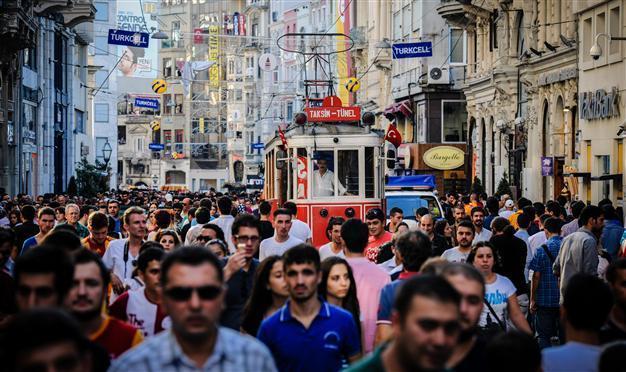Gap between rich and poor remains same in Turkey
ANKARA

Daily News Photo/ Emrah Gürel
The income of the richest part of the population is eight times higher than that of the poorest part in Turkey last year while income distribution showed an insignificant rise from 2011, according to figures revealed by the state-run statistics body TÜİK early today.Income distribution was recovered by 0.002 points in comparison to last year. The Gini coefficient, which is one of the income inequality criteria, is estimated as 0.402 with a decrease 0.002 points based on the previous year.
Considering the quintiles, the share of the highest income group – fifth quintile group – is 46.6 percent, whereas the share of the first quintile which has the lowest income is 5.9 percent.
The average annual disposable income per household is 26,577 Turkish Liras whereas average annual equivalized household disposable income is 11,859 liras. By the regions; Istanbul has the highest average annual equivalized household disposable income with 16,126 liras. This is followed by West Anatolia with 14,160 liras. Southeast Anatolia has the lowest average income with 5,870 liras.
Wage and salaries have the highest rate with 46.5 percent of total income. This is followed by the entrepreneurial incomes with 20.4 percent and social transfers with 20 percent.
Pensions and survivor’s benefits account for 92 percent of social transfers. The proportion of pensions and survivor’ benefits is 18.4 percent while the rate of the other social transfers is 1.6 percent of total income. A total of 66.7 percent of entrepreneurial incomes are formed by non-agricultural income.
Various relative poverty thresholds are calculated by using 40 percent, 50 percent, 60 percent or 70 percent of equivalised household disposable median income.
A total of 16.3 percent of total population is at risk of poverty according to the poverty threshold calculated by 50 percent of equivalized household disposable median income. While this rate is 13.8 percent for urban areas, it is 16.3 percent for rural areas by using poverty thresholds calculated separately for the two categories.
“Persistent at-risk-of-poverty-rate” shows the percentage of the population living in households where the equivalized disposable income was below the “at-risk-of-poverty threshold” for the current year and at least two out of the preceding three years. In calculating persistent at-risk-of-poverty-rate, 60 percent of equivalized household disposable median income is taken into account. According to this definition, the persistent at-risk-of-poverty-rate was 16 percent in both 2011 and 2012.
















